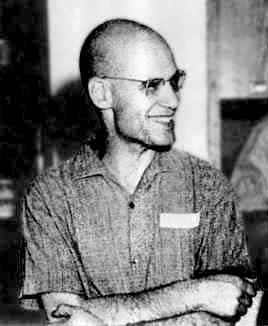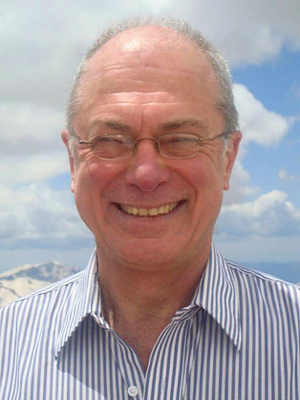
Alexander Grothendieck was a German-born mathematician who became the leading figure in the creation of modern algebraic geometry. His research extended the scope of the field and added elements of commutative algebra, homological algebra, sheaf theory, and category theory to its foundations, while his so-called "relative" perspective led to revolutionary advances in many areas of pure mathematics. He is considered by many to be the greatest mathematician of the twentieth century.

Jean-Pierre Serre is a French mathematician who has made contributions to algebraic topology, algebraic geometry and algebraic number theory. He was awarded the Fields Medal in 1954, the Wolf Prize in 2000 and the inaugural Abel Prize in 2003.

Pierre René, Viscount Deligne is a Belgian mathematician. He is best known for work on the Weil conjectures, leading to a complete proof in 1973. He is the winner of the 2013 Abel Prize, 2008 Wolf Prize, 1988 Crafoord Prize, and 1978 Fields Medal.
In mathematics, a dessin d'enfant is a type of graph embedding used to study Riemann surfaces and to provide combinatorial invariants for the action of the absolute Galois group of the rational numbers. The name of these embeddings is French for a "child's drawing"; its plural is either dessins d'enfant, "child's drawings", or dessins d'enfants, "children's drawings".
In mathematics, Belyi's theorem on algebraic curves states that any non-singular algebraic curve C, defined by algebraic number coefficients, represents a compact Riemann surface which is a ramified covering of the Riemann sphere, ramified at three points only.

Yuval Zvi Flicker is an American mathematician. His primary research interests include automorphic representations.
"Esquisse d'un Programme" is a famous proposal for long-term mathematical research made by the German-born, French mathematician Alexander Grothendieck in 1984. He pursued the sequence of logically linked ideas in his important project proposal from 1984 until 1988, but his proposed research continues to date to be of major interest in several branches of advanced mathematics. Grothendieck's vision provides inspiration today for several developments in mathematics such as the extension and generalization of Galois theory, which is currently being extended based on his original proposal.
In mathematics, a p-adic zeta function, or more generally a p-adic L-function, is a function analogous to the Riemann zeta function, or more general L-functions, but whose domain and target are p-adic. For example, the domain could be the p-adic integersZp, a profinite p-group, or a p-adic family of Galois representations, and the image could be the p-adic numbersQp or its algebraic closure.
Anabelian geometry is a theory in number theory which describes the way in which the algebraic fundamental group G of a certain arithmetic variety X, or some related geometric object, can help to restore X. The first results for number fields and their absolute Galois groups were obtained by Jürgen Neukirch, Masatoshi Gündüz Ikeda, Kenkichi Iwasawa, and Kôji Uchida prior to conjectures made about hyperbolic curves over number fields by Alexander Grothendieck. As introduced in Esquisse d'un Programme the latter were about how topological homomorphisms between two arithmetic fundamental groups of two hyperbolic curves over number fields correspond to maps between the curves. A first version of Grothendieck anabelian conjecture was solved by Hiroaki Nakamura and Akio Tamagawa, then completed by Shinichi Mochizuki -- see survey.

Pierre Colmez is a French mathematician, notable for his work on p-adic analysis.
In mathematics, the André–Oort conjecture is a problem in Diophantine geometry, a branch of number theory, that can be seen as a non-abelian analogue of the Manin–Mumford conjecture, which is now a theorem. The conjecture concerns itself with a characterization of the Zariski closure of sets of special points in Shimura varieties. A special case of the conjecture was stated by Yves André in 1989 and a more general statement was conjectured by Frans Oort in 1995. The modern version is a natural generalization of these two conjectures.
In mathematics, Lafforgue's theorem, due to Laurent Lafforgue, completes the Langlands program for general linear groups over algebraic function fields, by giving a correspondence between automorphic forms on these groups and representations of Galois groups.
Shinichi Mochizuki is a Japanese mathematician working in number theory and arithmetic geometry. He is one of the main contributors to anabelian geometry. His contributions include his solution of the Grothendieck conjecture in anabelian geometry about hyperbolic curves over number fields. Mochizuki has also worked in Hodge–Arakelov theory and p-adic Teichmüller theory. Mochizuki developed inter-universal Teichmüller theory, which has attracted attention from non-mathematicians due to claims it provides a resolution of the abc conjecture.
In anabelian geometry, a branch of algebraic geometry, the section conjecture gives a conjectural description of the splittings of the group homomorphism , where is a complete smooth curve of genus at least 2 over a field that is finitely generated over , in terms of decomposition groups of rational points of . The conjecture was introduced by Alexander Grothendieck in a 1983 letter to Gerd Faltings.
In mathematics, the Grothendieck–Teichmüller groupGT is a group closely related to the absolute Galois group of the rational numbers. It was introduced by Vladimir Drinfeld and named after Alexander Grothendieck and Oswald Teichmüller, based on Grothendieck's suggestion in his 1984 essay Esquisse d'un Programme to study the absolute Galois group of the rationals by relating it to its action on the Teichmüller tower of Teichmüller groupoids Tg,n, the fundamental groupoids of moduli stacks of genus g curves with n points removed. There are several minor variations of the group: a discrete version, a pro-l version, a k-pro-unipotent version, and a profinite version; the first three versions were defined by Drinfeld, and the version most often used is the profinite version.

Coralie Colmez is a French author and tutor in mathematics and mathematics education.
Wiesława Krystyna Nizioł is a Polish mathematician, director of research at CNRS, based at Institut mathématique de Jussieu. Her research concerns arithmetic geometry, and in particular p-adic Hodge theory, Galois representations, and p-adic cohomology.

Frans Oort is a Dutch mathematician who specializes in algebraic geometry.
In mathematics, a tame topology is a hypothetical topology proposed by Alexander Grothendieck in his research program Esquisse d’un programme under the French name topologie modérée. It is a topology in which the theory of dévissage can be applied to stratified structures such as semialgebraic or semianalytic sets.
Math on Trial: How Numbers Get Used and Abused in the Courtroom is a book on mathematical and statistical reasoning in legal argumentation, for a popular audience. It was written by American mathematician Leila Schneps and her daughter, French mathematics educator Coralie Colmez, and published in 2013 by Basic Books.








